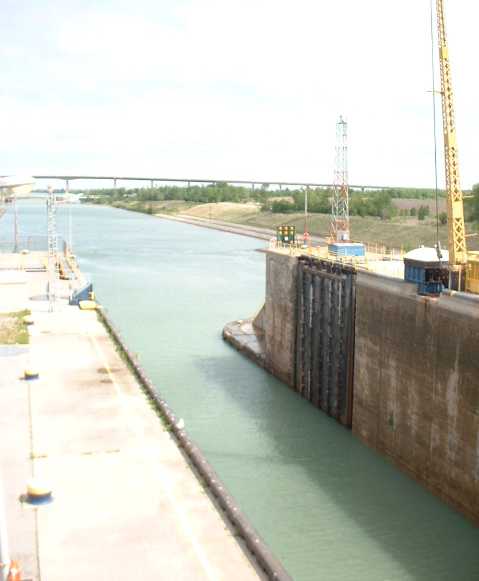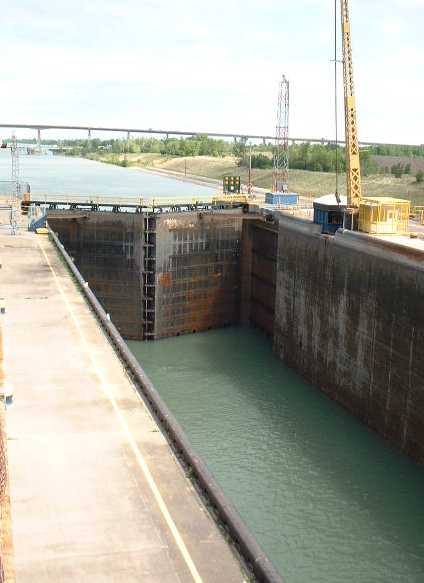The Locks


The dimensions of the average lock were 33.5m. long by 6.7m. wide by 4.9m. high in the first canal. Ships and technology have changed drastically over the years and therefore, the sizes of the locks have changed to accommodate the changing demands (or have the demands changed to fully utilise the size of the locks?). The size of the average lock of each of the different canals is listed below
I wonder how much water a lock holds (Activity)
A ship in the present Welland canal is raised approximately 14.2m. at every lock. It takes 90 000 m³ of water to accomplish this task.
How does a lock work?
Suppose a ship is sailing from Lake Ontario to Lake Erie. It has to be raised through each lock to a higher water level.
-Next, the gates are closed and large valves open to allow water to flow from the higher canal into the lock. The ship begins to rise.
-When the water level has risen to the height of the canal above the lock, the gates at the end are opened and the ship sails out.
There are two things to think about; the doors of the lock and the amount of water in the lock.
Firstly, when the doors of the locks close they meet at a 22.5° angle
I wonder why the doors close at a 22.5° angle? (Activity)
Secondly, you may think this takes alot of energy to fill and empty the locks but all of the locks on the Welland canal are filled and drained by gravity. When the locks are "empty" they still have water in them, otherwise the boats would scrape the bottom the the canal when they go through the locks.
If a lock isn't completely empty, how full is it? (Activity)
Since the lock isn't completely empty it shouldn't take that long to fill.
I wonder how fast the locks fill and empty (Activity)
As you move further down the Welland canal you will notice the flight locks. The flight locks are a series of three locks that are not separated by a long stretch of water. They are called the flight locks because they look like steps in a flight of stairs and were designed to lift the ships up the Niagara escarpment more efficiently. As a result, the overall slope of the flight locks is very steep.